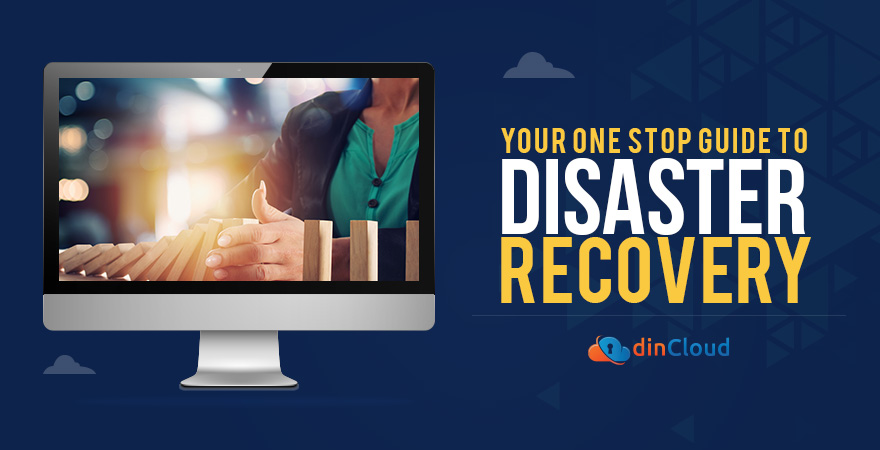Although the term disaster has a very broad connotation, we will restrict its definition in today’s post to just IT infrastructures. In IT terms, any such even that can affect or entirely disrupt your routine operations can be classified as a disaster.

In today’s super competitive environment, not planning and preparing for an imminent disaster is in fact a recipe for disaster. All the effort that goes into chalking out the remedial measures you’ll take in any such event is broadly known as Disaster Recovery or DR.
So, what’s the foremost step you should take as a business to prepare against imminent disasters? Well, let’s find out.
Determine the Bottom Line
This is perhaps the best starting point for you when it comes to disasters. As a business, you’ll have numerous operations in place. While none of them can be totally ignored, there will surely be certain processes you simply can’t risk going debunk.
Once you have identified the mission critical processes, this will form your bottom line that you have to plan for, to the best extent possible. When you have determined a certain bottom line, the next step is identifying potential threat vectors.
Also Read: Cloud and Edge Computing to Lead Post Pandemic Digital Transformation
Identify Threat Vectors
The next step will comprise of highlighting all the possible threat vectors that can jeopardize your bottom line. This analysis will be a mix of both natural and man made events alike, as you’ll have to plan for both.
You will also have to segregate the identified threat vectors in terms of their potential impact. Some of the identified threats will affect your hardware side, while others will negatively impact your software or operational side.
Chalk out a DR Strategy
When you have accomplished the above steps, the next crucial step towards achieving a robust disaster recovery is evolving a strategy. At this stage, you will also have to weigh in the costs and benefits of on premise or third party DR solutions.
While setting up on site DR will be costly in the short and long term, it will allow you maximum control. If you outsource your DR function to a third party though, you will lose a certain degree of control, but also achieve cost savings by doing so.
Also Read: How to Safeguard Your Health and Financial Records in Covid-19
It is worth mentioning here that no DR strategy can be completely fail safe. Even if you can come up with such a strategy, its exorbitant costs won’t allow you to take this strategy into the implementation phase.
Implement Your DR Strategy
Once you have done all the brainstorming and cost benefit analyses, now is the right time to put the wheels into motion and implement the DR strategy. All along the implementation phase, you will have to ensure it remains on track with your objectives.
Test the DR Strategy Regularly
Having in place a DR strategy is one thing and seeing it actually work is a completely different thing. You need to constantly test the efficacy of your DR strategy by creating mock disaster scenarios.
Remember to employ all the possible threat vectors that you had identified in the planning phase of your DR strategy. This should be a regular activity, repeated periodically so that your strategy always remains abreast with the latest sources of threats.
As soon as you identify any vulnerability in your DR strategy, you immediately need to plug that gap. Otherwise, all the planning and resources will go to waste because we are currently in an environment where threat vectors are also evolving over time.
Also Read: Why Should Secure Work Environments be a Top Priority?
What do you have to Lose?
Turning a blind eye to disaster recovery needs can affect your enterprise in multiple ways. Let’s identify some key areas where you can potentially lose a lot in the absence of a robust DR mechanism being in place.
Risks to Operations
If a disaster takes down your operations, you will no longer be able to serve your customers. In some cases, certain contractual obligations may also get breached if you fall short of delivering what you had actually promised to consumers.
Financial Losses
Your inability to operate in a disaster could ultimately entail a financial cost. According to recent studies, a single data breach costs an enterprise a whopping US $4 MN on average. Even for reasonably sized businesses, this can be a huge monetary shock.
Reputational Risks
Its said that a tarnished reputation is nearly impossible to recover from. In the event of not being able to serve your customers or meet contractual obligations, your overall repute in the marketplace will often take an irreparable hit.
Also Read: How will the Cloud Re-Shape Our Recovery from Covid-19
Conclusion
In the present times, having a robust Disaster Recovery (DR) in place is no more a choice, rather a compulsion. Sooner or later, you’ll have to face a disaster or two and that’s where you can truly delight your customers by providing unimpeded services.
dinCloud is a leading Cloud Service Provider (CSP) that offers a robust Disaster Recovery (DR) mechanism built into its cloud services. Contact Us for any further details please.


